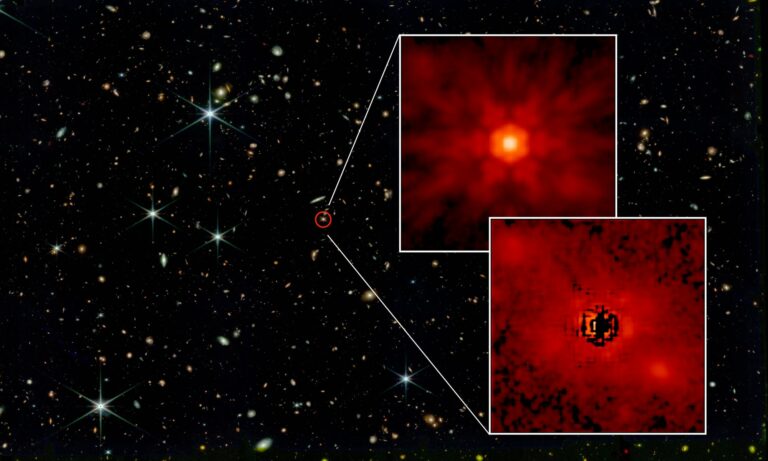Supermassive black holes have their origins in the formation of massive cosmic seeds.
Super massive black holes are the main factor in the formation and transformation of galaxies. They are involved in the processes of galactic formation, stellar production and at the same time, maybe also the clustering of dark matter. Almost each galaxy contains a supermassive black hole, which usually is a small part of the galaxy’s mass in nearby galaxies. Despite our extensive knowledge about these gravitational behemoths, one lingering question remains: who was the big boss and what was the speed of accumulation of mass of supermassive black holes?
Early black holes knowledge is mainly about quasars. These phenomena take place when supermassive black holes go into an extremely active state, by absorbing a huge amount of matter and radiating powerful light that can be seen in the whole Universe. The James Webb Space Telescope and other observatories have found out that quasars that are more than 13 billion years old still existed even when the big bang happened from 500 million years ago. Nevertheless, the study of these wonderful fireballs is a difficult task. It is the quasars that are so bright that they are much too dominant to their host galaxies and they thus make it difficult to their surroundings of these early quasars. On the contrary, a recent study published in The Astrophysical Journal has used a spectral technique to observe the very distant galactic hosts of these quasars.
The research team, through JWST data, studied six quasars that are roughly 13 billion light-years away. Through the process of checking the quasars across the different wavelengths, the scientists compared the light with the model quasars, thus they have been able to figure out which wavelengths are from the compact source of the quasar and which are from the more diffuse galaxy that surrounds it. By the exclusion of quasar light, they smoothly got the first pictures of the far away galaxies which are the house of these old quasars.
The group came up with a very remarkable finding when they compared the mass of a quasar to the mass of its host galaxy. They discovered that in the early galaxies, the black hole with supermassive is about 10% of the galaxy’s mass, which is much larger than the mass ratio in the local galaxies. Local galaxies have supermassive black holes which usually make up just a tenth of a percent of the mass of the galaxy. This means that the really huge black holes in the beginning of the galaxy were probably the main cause for its formation. This study contradicts the view that the early galaxies were formed first and then their black holes were formed later.
Although these black holes are considered to be very fascinating, astronomers still have many unanswered questions about how supermassive black holes were created so fast in the early Universe. After one question has been solved, it has generated a number of other questions about the evolution of these mysterious celestial bodies.
Reference: Yue, Minghao, et al. “EIGER. V. Characterizing the Host Galaxies of Luminous Quasars at z ? 6.” The Astrophysical Journal 966.2 (2024): 176.
Do not forget to share your opinion with us to provide you with the best posts !




0 Comments